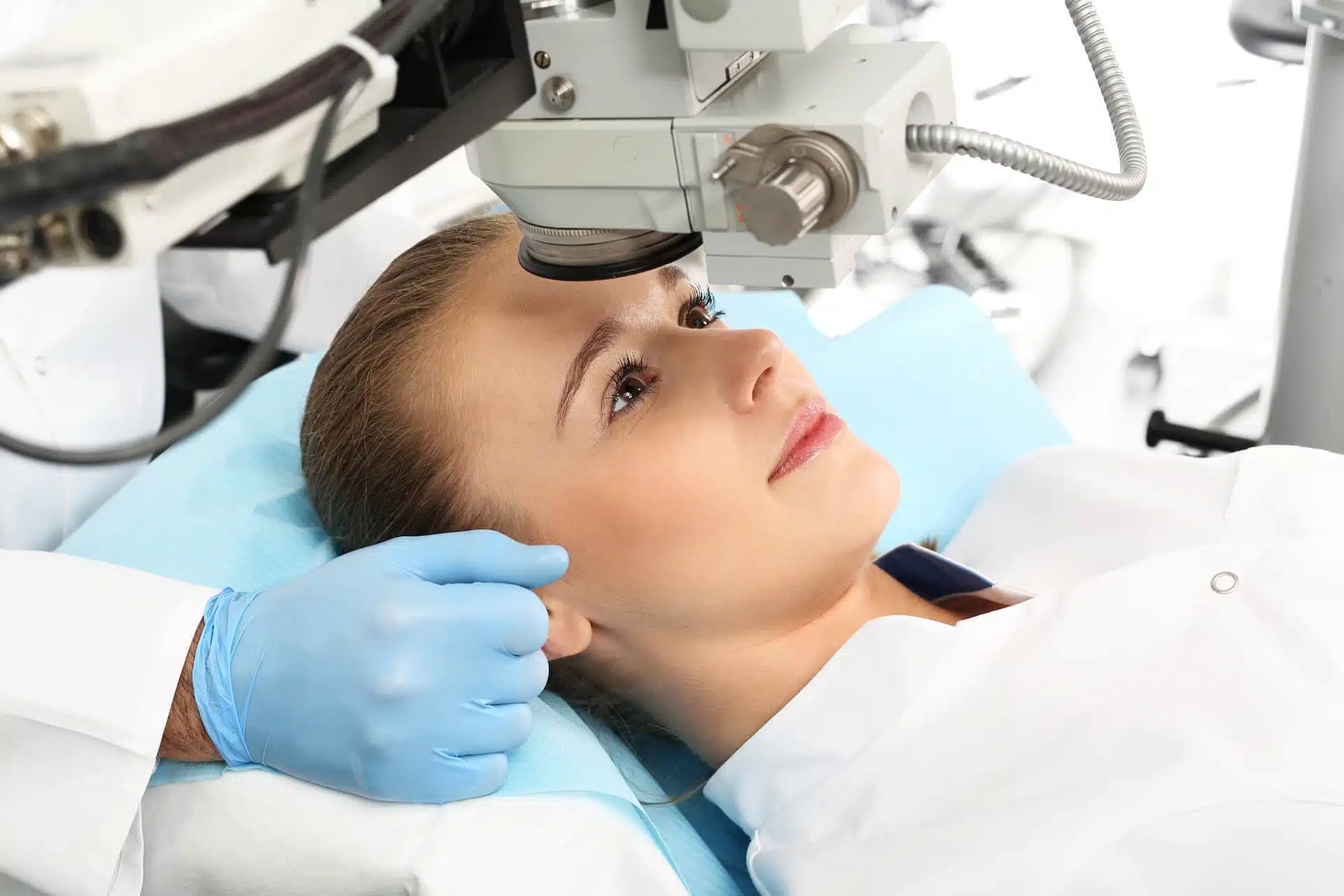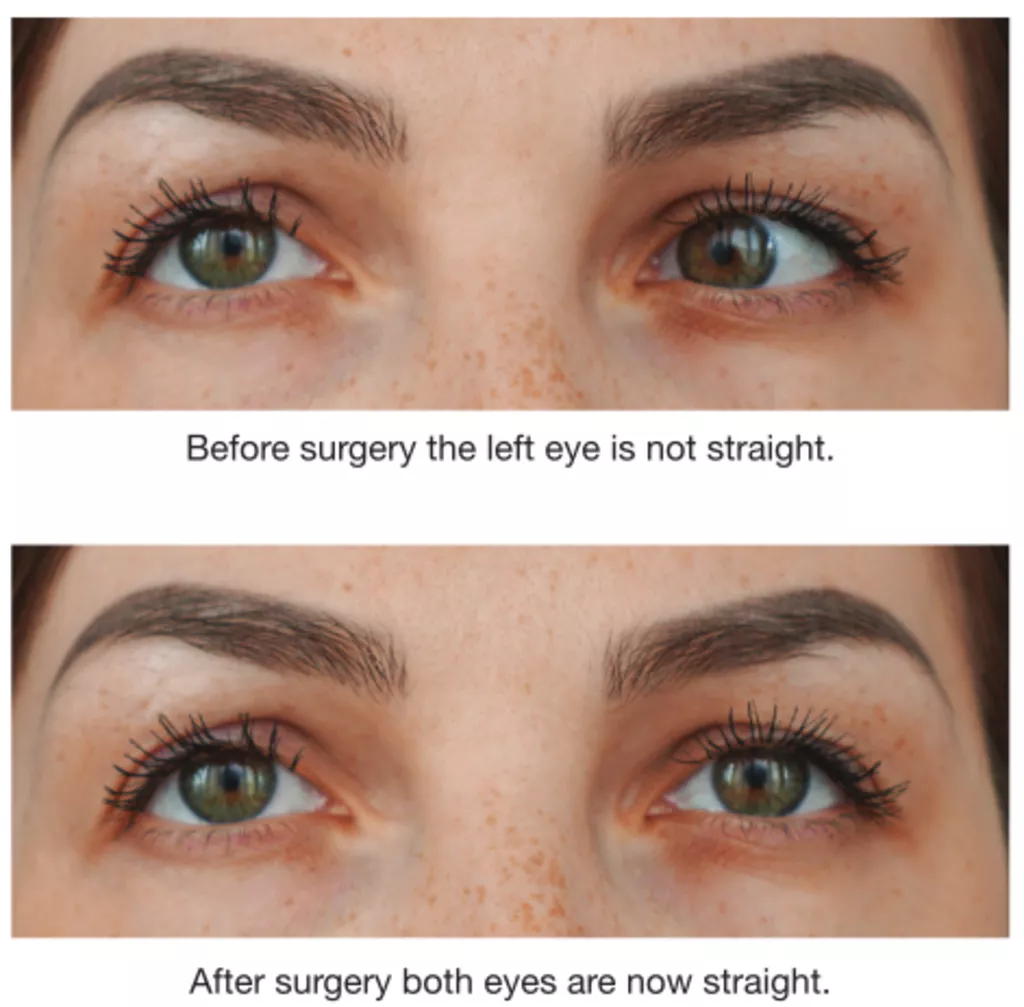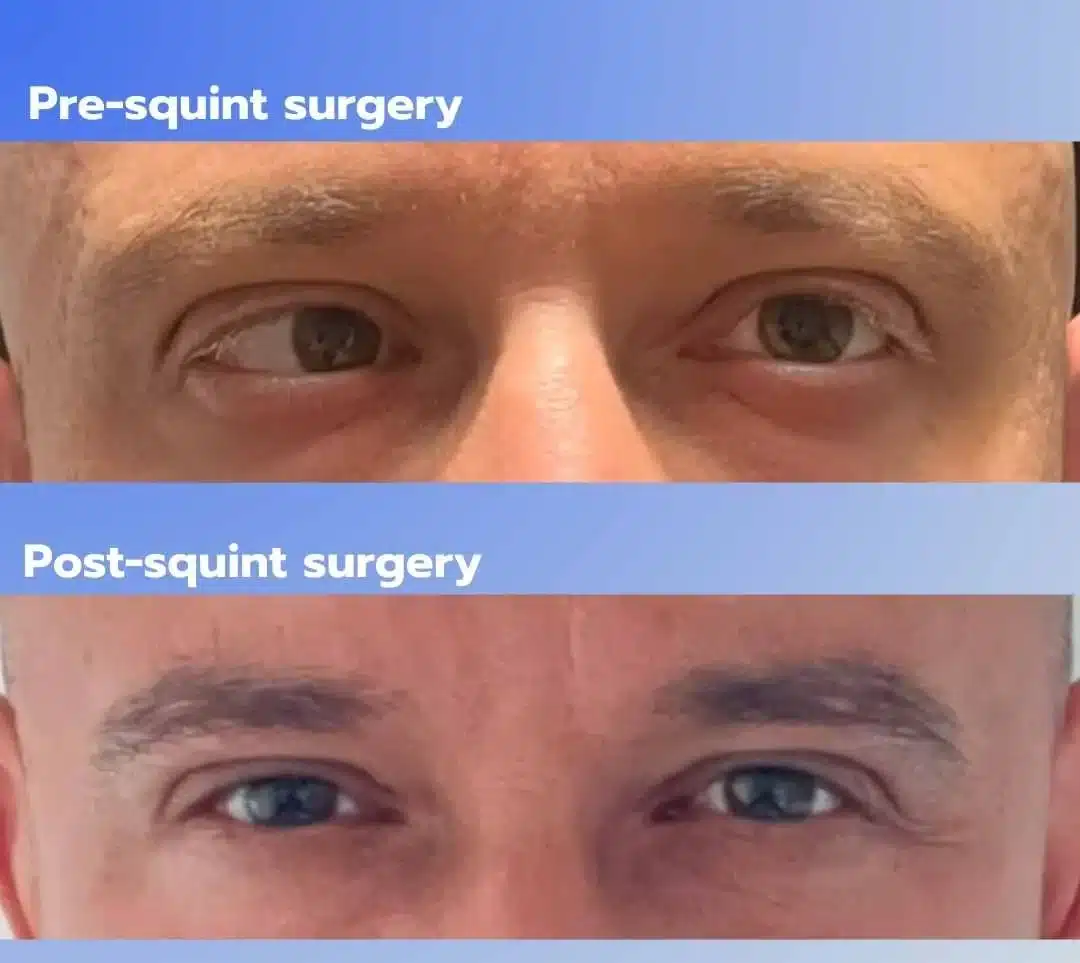Table of Contents

Strabismus Surgery in Turkey: Discover the Life-Changing Benefits of Eye Alignment Surgery
Struggling with crossed or misaligned eyes? You’re not alone—and there is hope. Strabismus, commonly known as crossed eyes, affects millions of people globally and can impact both children and adults. While glasses, eye patches, or therapy can sometimes help, surgery for strabismus is often the most effective long-term solution.
Turkey has emerged as a global leader in medical tourism, offering advanced strabismus eye surgery at competitive prices. In this comprehensive guide, you’ll learn everything you need to know about strabismus surgery in Turkey, including how it works, the different types, recovery timelines, costs, and what makes Turkey a trusted destination for eye care.
Time in Turkey
7 to 14 days
Surgery Time
2 to 5 hours
Hospital Stay
1 to 3 days
Recovery
2 to 6 weeks
Accomodation
4/5* Hotels
Transportation
Private Driver
What is Strabismus Strabismus Surgery in Turkey?
Strabismus is a condition where the eyes do not align properly. One eye may turn inward, outward, upward, or downward, while the other remains focused. This misalignment can be constant or occur occasionally and may result from nerve damage, poor muscle control, or other underlying issues.
Purpose of the Surgery
The main goal of surgery for strabismus is to adjust the eye muscles to improve alignment and allow the eyes to work together. This can significantly improve depth perception, coordination, and even self-confidence, especially in children.
Fortunately, cataract surgery is a safe, effective, and widely performed procedure that restores clear vision by replacing the clouded lens with an artificial intraocular lens (IOL). With advancements in medical technology, cataract surgery has become minimally invasive and highly successful, allowing patients to return to their daily routines within days.
Among the top destinations for affordable and high-quality cataract surgery, Turkey has emerged as a leader in medical tourism. Thousands of international patients choose cataract surgery in Turkey due to its cutting-edge medical facilities, experienced surgeons, and cost-effective treatment options.
By the end of this guide, you will have all the information needed to decide if cataract surgery in Turkey is the right option for you.
In this comprehensive guide, we’ll explore everything you need to know about getting a cornea transplant in Turkey—from the different types of procedures and their benefits to risks, recovery, and cost comparisons. Whether you’re actively considering surgery or simply exploring your options, this article will equip you with the knowledge you need to make an informed decision with confidence.
Types of Strabismus Surgery
Undergoing strabismus surgery is not just about improving appearance—it’s a functional, medical, and psychological game-changer for many patients. Here’s a detailed breakdown of the benefits that make this procedure a life-enhancing experience:
1. Improved Eye Alignment
The most immediate and noticeable result of strabismus eye surgery is the straightening of the eyes. Proper alignment improves facial symmetry and eliminates the visible eye deviation that can affect a person’s confidence and social interactions. For children, early correction can prevent teasing and help them engage better in school and social settings.
2. Enhanced Binocular Vision
When the eyes work together, the brain can process images more efficiently, leading to improved depth perception and three-dimensional vision. For patients who have struggled with visual confusion or double vision (diplopia), surgery often helps restore comfortable and functional sight.
3. Better Visual Function and Coordination
Correcting eye alignment can dramatically improve visual tracking, especially important for reading, driving, playing sports, and using digital devices. Patients often report better concentration, fewer headaches, and less eye strain during daily tasks after surgery.
4. Improved Career and Academic Opportunities
Strabismus, particularly when untreated in adulthood, can negatively impact job opportunities—especially in roles requiring direct communication or precise vision (like customer service, aviation, or law enforcement). By correcting misalignment, patients often feel more empowered to pursue opportunities they previously avoided.
5. Boost in Self-Esteem and Confidence
Let’s face it—appearance matters. Individuals with strabismus often experience social anxiety, self-consciousness, or low self-worth. The cosmetic improvement from strabismus surgery before and after can be dramatic and transformative, allowing patients to make eye contact and smile with confidence.
6. Psychological and Emotional Relief
Children and adults with strabismus may experience emotional struggles, including frustration, embarrassment, and isolation. After surgery, many report improved mental well-being, better peer interactions, and a more positive self-image.
7. Long-Term, Often Permanent Results
Unlike glasses or vision therapy which offer temporary or partial corrections, surgery for strabismus provides a more lasting solution by targeting the actual eye muscles. Many patients experience lifelong improvement with minimal need for follow-up surgery.
8. Quick Recovery and Minimal Downtime
The recovery period for strabismus surgery is relatively short, with most people returning to regular activities within a few days. Modern surgical techniques, particularly in advanced Turkish clinics, ensure low invasiveness and high precision, reducing the need for prolonged hospital stays or extended healing.
9. Affordable Access to High-Quality Care in Turkey
Getting strabismus surgery in Turkey doesn’t just offer all these health benefits—it does so at a fraction of the cost you’d pay in the U.S., Canada, or Europe. Combined with expert care, internationally accredited clinics, and luxurious recovery packages, the overall experience is both healing and cost-effective.
How Is the Strabismus Surgery Procedure Done?
Strabismus surgery is performed to correct eye misalignment (also known as crossed eyes or squint). This procedure involves adjusting the eye muscles responsible for the misalignment to restore proper eye positioning. Here’s a breakdown of how the surgery is done:
1. Pre-Surgery Preparation
Consultation: The patient undergoes a thorough eye examination to measure the degree of misalignment, check vision, and evaluate eye health.
Anesthesia: The procedure is typically done under local anesthesia (numbing the eye and surrounding area). For children or patients who are anxious, general anesthesia may be used to ensure they are completely relaxed and comfortable.
Pre-Op Instructions: The surgeon provides instructions to avoid eating or drinking for several hours before the procedure (especially if general anesthesia is used).
2. Surgical Procedure
Incisions: Small incisions (about 2-3 millimeters) are made in the conjunctiva (the thin membrane covering the white part of the eye). These are typically made in areas that are not noticeable to minimize scarring.
Eye Muscle Adjustment: The surgeon accesses the muscles responsible for the misalignment:
Tightening: If the muscle is too weak (causing the eye to drift outward), it is tightened to help pull the eye back into proper alignment.
Repositioning: If the muscle is too strong (causing the eye to turn inward), the surgeon may reposition or weaken it.
In some cases, the surgeon may adjust both the horizontal and vertical muscles depending on the severity of the misalignment.
Finishing the Procedure: After adjusting the muscles, the surgeon checks the alignment to ensure both eyes are properly positioned. The incisions are closed with absorbable sutures, which don’t need to be removed.
3. Post-Surgery Care
Recovery Time: The procedure usually takes about 1-2 hours. Most patients can go home the same day.
Discomfort: Some discomfort, such as mild itching or irritation, is common after surgery. Ice packs can help reduce swelling.
Eye Drops & Medications: Antibiotic eye drops are prescribed to prevent infection, and anti-inflammatory drops are used to reduce swelling and pain.
4. Follow-Up Care
First Check-Up: The first follow-up appointment typically happens within 1-2 days to ensure proper healing and eye alignment.
Healing Process: The eyes may appear red or swollen initially, but this usually resolves within a few weeks.
Visual Improvement: Full alignment correction may take a few weeks to months as the eye muscles heal. Some patients may require additional surgeries or minor adjustments if the misalignment persists.
5. Long-Term Outlook
Most patients experience improved eye alignment and better binocular vision after surgery. However, the results can vary, and some patients may need additional procedures or corrective measures, especially if the strabismus was severe.
Why is Turkey a Popular Destination for Strabismus Surgery?
Turkey has become a top choice for medical tourism, especially for strabismus surgery. Known for high medical standards, skilled surgeons, and advanced facilities, it offers affordable prices and short waiting times. Patients from Europe, the Middle East, and beyond are drawn to Turkey for its quality care and cost-effective treatments, with many clinics providing comfortable recovery packages. This blend of expertise and affordability makes Turkey an appealing destination for eye care:
⬛ High medical standards
⬛ Experienced surgeons
⬛ Affordable prices
⬛ Short waiting times
⬛ Luxurious recovery packages
The blend of quality care and cost savings makes strabismus surgery in Turkey an appealing option for patients from Europe, the Middle East, and beyond.
After & Befor Strabismus Surgery




Strabismus Surgery Cost in Turkey vs. Other Countries
Strabismus surgery, commonly known as eye muscle surgery, is a procedure used to correct misalignment of the eyes. It is performed worldwide, but the cost of the surgery varies significantly depending on the country, the surgeon’s expertise, and the healthcare facility. Turkey has emerged as a popular destination for strabismus surgery due to its affordable pricing and high-quality medical care. In comparison, the cost of this procedure in other countries can be considerably higher. Below is an overview of strabismus surgery costs in Turkey versus other countries to help patients make an informed decision.
Country | Average Cost |
USA | $5,000 – $9,000 |
UK | £4,000 – £7,000 |
Canada | CAD 6,000 – 10,000 |
Turkey | $1,500 – $3,000 |
You could save up to 70% without compromising on quality. Many Turkish clinics also include accommodations and airport transfers in their packages.
Choosing the Right Clinic and Surgeon
When it comes to strabismus eye surgery, your choice of clinic and surgeon can make all the difference—not only in the quality of results but also in your overall safety, comfort, and satisfaction. Strabismus is a delicate condition involving precise adjustments to the muscles that control eye movement, and even small errors can lead to suboptimal results or the need for repeat surgery.
Here’s everything you need to consider when selecting the right provider for your strabismus surgery in Turkey:
Surgeon’s Credentials and Experience
The skill and experience of the ophthalmologist or eye surgeon are absolutely critical. Look for:
■ Board certification in ophthalmology or pediatric ophthalmology
■ Specialization in strabismus correction surgeries
■ Years of experience performing the procedure (minimum of 5–10 years is ideal)
■ A track record of success, including before and after case studies
■ Membership in international medical associations, such as the European Society of Ophthalmology (SOE) or American Academy of Ophthalmology (AAO)
Tip: Don’t hesitate to ask how many strabismus surgeries the doctor performs annually and their personal success rate.
Clinic Accreditation and Facilities
Not all clinics are created equal. Make sure the facility is:
■ Licensed by the Turkish Ministry of Health
■ Accredited by international organizations, such as JCI (Joint Commission International)
■ Equipped with modern ophthalmologic technology and clean, sterile surgical environments
■ Staffed with certified anesthesiologists, nurses, and multilingual support teams
High-end eye clinics in Istanbul, Ankara, or Antalya often offer top-tier standards that meet or exceed those in Western Europe or North America.
Multilingual Support and Medical Tourism Services
If you’re traveling from abroad, communication is key. Choose a clinic that offers:
■ English-speaking coordinators, doctors, and support staff
■ Translation services if needed (for other languages like French, German, Arabic, etc.)
■ Assistance with travel arrangements, including airport pickup, hotel bookings, and follow-up transport
■ A dedicated international patient department to handle logistics and aftercare planning
Transparent Pricing and Packages
Reliable clinics should offer clear, upfront pricing that includes:
■ Initial consultation
■ Pre-operative testing
■ Surgery and anesthesia
■ Medications and post-op care
■ Follow-up appointments
■ Accommodation and transportation (if part of a package)
Avoid clinics that are vague about costs or push for unnecessary add-ons. A trustworthy provider will explain every charge and offer fair refund/cancellation policies.
Before-and-After Results and Testimonials
Request access to before-and-after photos of previous patients who underwent surgery for strabismus at the clinic. Also, check for:
■ Verified Google Reviews or Trustpilot ratings
■ Video testimonials from international patients
■ Patient success stories on YouTube or the clinic’s social media channels
This not only helps assess the clinic’s results but also builds confidence that they’ve helped people in similar situations.
Follow-Up Care and Support
Surgery is only one part of the journey. Post-op support is crucial, especially if complications arise or if you’re returning to your home country shortly after surgery. Look for clinics that offer:
■ 24/7 medical support lines
■ Access to virtual consultations post-surgery
■ A clear, written recovery plan tailored to your case
■ Coordination with a local doctor in your country if long-term follow-up is needed
Clinic Location and Accessibility
Consider the clinic’s proximity to:
■ Major airports
■ Quality hotels or recovery accommodations
■ Emergency facilities (just in case)
■ Cultural attractions (for combining treatment with tourism, if desired)
Many top eye clinics in Turkey are located in Istanbul, which is not only a global travel hub but also home to some of the country’s best medical professionals.
Red Flags to Watch Out For
Be cautious of clinics that:
■ Promise 100% guaranteed results
■ Offer extremely low prices without transparency
■ Use aggressive marketing tactics or pressure to book quickly
■Have no verifiable reviews or medical certifications
Your eyesight is precious—don’t compromise for cost alone.
What to Look for in a Strabismus Surgery Clinic
■ Clean, accredited facility
■ Multilingual staff (especially English-speaking)
■ Personalized treatment plans
■ Pre- and post-operative care support
■ Reasonable pricing with no hidden fees
Questions to Ask Your Surgeon Before the Procedure
■ What type of strabismus do I have?
■ Which surgical method will you use?
■ What are the risks specific to my case?
■ Will I need more than one surgery?
■ What does the recovery process involve?
Asking the right questions helps you feel confident and informed.
How to Book Strabismus Surgery in Turkey
Booking strabismus surgery (eye muscle surgery to correct misalignment) in Turkey is a straightforward process, as the country is known for its high-quality medical care and affordable treatment options. Here’s a step-by-step guide to help you book your surgery:
1. Research & Choose a Reputable Clinic or Hospital
■ Look for well-established eye clinics or hospitals in Turkey with experienced ophthalmologists or strabismus specialists.
■ Verify the clinic’s accreditation and check patient reviews and testimonials to ensure they provide quality care.
■ Make sure the clinic uses advanced surgical techniques and technology for precise diagnosis and treatment.
2. Contact the Clinic for Consultation
■ Many clinics offer online consultations via video call, email, or messaging services.
■ Share your medical history, symptoms, and previous treatments (if any).
■ The specialist will assess your case and provide a customized treatment plan for your strabismus.
■ Ask questions about the type of surgery, recovery process, and expected outcomes.
3. Confirm Treatment Plan & Cost
■ Request a detailed cost breakdown, including:
■ Consultation fees
■ Surgery fees
■ Pre-op tests and post-op care
■ Hospital stay (if necessary)
■ Discuss payment options, and check for any discounts or package deals.
■ Some clinics offer all-inclusive packages that include accommodation, transport, and other services for international patients.
4. Plan Your Travel & Accommodation
■ Book your flight to Turkey (Istanbul, Ankara, and Izmir are popular medical tourism destinations).
■ Many clinics offer hotel packages or help arrange nearby accommodation.
■ Visa requirements should be checked based on your nationality.
5. Arrive & Undergo Pre-Surgery Examinations
■ Upon arrival, you will undergo a series of eye tests, including a complete eye examination and measurements to determine the exact alignment of your eyes.
■ The surgeon will discuss the surgical options and any risks associated with the procedure.
6. Undergo Strabismus Surgery
■ The surgery is typically performed under local anesthesia (or general anesthesia, depending on the patient’s age or preference).
■ The surgeon makes small incisions near the eyes to adjust the muscles responsible for eye alignment.
■ The surgery usually takes about 1-2 hours.
■ Minimal hospital stay is required, and many patients can return to their accommodation the same day.
7. Post-Surgery Care & Follow-Up
■ You will receive post-surgery instructions, including the use of eye drops and medications to reduce inflammation and prevent infection.
■ Rest and avoid strenuous activities for a few days.
■ A follow-up appointment is scheduled within a few days to monitor the recovery and ensure proper healing.
Benefits of Strabismus Surgery
Undergoing strabismus surgery is not just about improving appearance—it’s a functional, medical, and psychological game-changer for many patients. Here’s a detailed breakdown of the benefits that make this procedure a life-enhancing experience:
1. Improved Eye Alignment
The most immediate and noticeable result of strabismus eye surgery is the straightening of the eyes. Proper alignment improves facial symmetry and eliminates the visible eye deviation that can affect a person’s confidence and social interactions. For children, early correction can prevent teasing and help them engage better in school and social settings.
2. Enhanced Binocular Vision
When the eyes work together, the brain can process images more efficiently, leading to improved depth perception and three-dimensional vision. For patients who have struggled with visual confusion or double vision (diplopia), surgery often helps restore comfortable and functional sight.
3. Better Visual Function and Coordination
Correcting eye alignment can dramatically improve visual tracking, especially important for reading, driving, playing sports, and using digital devices. Patients often report better concentration, fewer headaches, and less eye strain during daily tasks after surgery.
4. Improved Career and Academic Opportunities
Strabismus, particularly when untreated in adulthood, can negatively impact job opportunities—especially in roles requiring direct communication or precise vision (like customer service, aviation, or law enforcement). By correcting misalignment, patients often feel more empowered to pursue opportunities they previously avoided.
5. Boost in Self-Esteem and Confidence
Let’s face it—appearance matters. Individuals with strabismus often experience social anxiety, self-consciousness, or low self-worth. The cosmetic improvement from strabismus surgery before and after can be dramatic and transformative, allowing patients to make eye contact and smile with confidence.
6. Psychological and Emotional Relief
Children and adults with strabismus may experience emotional struggles, including frustration, embarrassment, and isolation. After surgery, many report improved mental well-being, better peer interactions, and a more positive self-image.
7. Long-Term, Often Permanent Results
Unlike glasses or vision therapy which offer temporary or partial corrections, surgery for strabismus provides a more lasting solution by targeting the actual eye muscles. Many patients experience lifelong improvement with minimal need for follow-up surgery.
8. Quick Recovery and Minimal Downtime
The recovery period for strabismus surgery is relatively short, with most people returning to regular activities within a few days. Modern surgical techniques, particularly in advanced Turkish clinics, ensure low invasiveness and high precision, reducing the need for prolonged hospital stays or extended healing.
9. Affordable Access to High-Quality Care in Turkey
Getting strabismus surgery in Turkey doesn’t just offer all these health benefits—it does so at a fraction of the cost you’d pay in the U.S., Canada, or Europe. Combined with expert care, internationally accredited clinics, and luxurious recovery packages, the overall experience is both healing and cost-effective.
Risks and Potential Side Effects
As with any surgical procedure, strabismus eye surgery does carry some risks. While strabismus surgery is generally safe and highly effective, it’s important to understand the potential risks and complications involved. This helps patients set realistic expectations, make informed decisions, and recognize signs that may require medical attention during recovery.
Here’s a detailed look at the possible risks and side effects associated with strabismus eye surgery:
1. Overcorrection or Undercorrection
Sometimes, the eye may be adjusted too much (overcorrection) or not enough (undercorrection), causing residual misalignment. Although this is rare, it can lead to persistent double vision or a need for additional surgery. Surgeons may use adjustable sutures in adults to fine-tune alignment after the procedure and reduce this risk.
2. Temporary Double Vision
It’s not uncommon to experience diplopia (double vision) in the days or weeks following surgery. This occurs as the brain adjusts to the new eye position. In most cases, it resolves on its own, but persistent double vision may require further evaluation or prism glasses.
3. Infection or Inflammation
Like any surgical procedure, there’s a small risk of infection, especially if postoperative care instructions aren’t followed properly. Signs include redness, excessive discharge, swelling, or worsening pain. Fortunately, infections are rare and usually respond well to antibiotic drops.
4. Reaction to Anesthesia
Children typically receive general anesthesia, while adults may be offered local or general anesthesia based on the case. Though uncommon, allergic reactions, nausea, or complications from anesthesia can occur. Experienced anesthesiologists in Turkey’s top clinics are well-equipped to handle such situations safely.
5. Eye Redness and Swelling
Redness and swelling in the white part of the eye (conjunctiva) are common after surgery and may last for several weeks. This is part of the normal healing process and usually fades without intervention.
6. Need for Repeat Surgery
In some complex or long-standing cases, particularly in adults, more than one operation may be required to fully align the eyes. Factors that increase the likelihood of this include:
■ Severe or long-term misalignment
■ Neurological causes
■Scarring from previous surgeries
7. Scarring or Visible Suture Bumps
Mild scarring at the incision site is possible but usually not visible or cosmetically concerning. Occasionally, patients may feel small bumps where sutures were placed. These often resolve over time but can be addressed if bothersome.
8. Rare Complications
Extremely rare but serious complications may include:
■ Perforation of the eyeball
■ Vision loss
■ Excessive bleeding during surgery
Damage to surrounding eye muscles
These complications occur in less than 1% of cases and are more likely to happen in underqualified facilities, which is why selecting a skilled surgeon and certified clinic is crucial—especially when traveling abroad for strabismus surgery in Turkey.
Is Strabismus Surgery Safe?
Yes, strabismus surgery is generally considered safe, especially when performed by a qualified ophthalmologist. In Turkey, many clinics meet or exceed European healthcare standards, offering high success rates and modern surgical techniques.
Strabismus Surgery FAQs
1. What is the success rate of strabismus surgery in Turkey?
Most Turkish clinics report success rates of 85–95%, especially for primary surgeries.
Is strabismus surgery painful?
The procedure itself is painless due to anesthesia. Post-op discomfort is mild and manageable with medication.
How long is the recovery period?
Full recovery takes 2–6 weeks, but many patients resume normal activities within a few days.
Can adults get strabismus surgery?
Absolutely. While early intervention is ideal, many adults benefit significantly from the surgery.
Will I need glasses after the surgery?
Possibly. Surgery corrects alignment, not vision quality. Glasses may still be needed for optimal sight.
How can I see strabismus surgery before and after photos?
Most clinics in Turkey will share portfolios or testimonials. Always ask to review patient case studies during your consultation.
Is strabismus surgery covered by insurance?
In many countries, including the U.S. and U.K., strabismus surgery may be partially or fully covered by insurance if it’s deemed medically necessary. However, when opting for strabismus surgery in Turkey, it’s usually an out-of-pocket expense unless your provider offers international coverage. Always check with your insurance company first.
How do I prepare my child for strabismus surgery?
Explain the procedure in simple, reassuring terms. Follow all pre-operative instructions from the surgeon, such as fasting and avoiding certain medications. Bringing a favorite toy or blanket can help ease anxiety on the day of surgery.
Can strabismus come back after surgery?
In some cases, yes. Recurrence can happen if the eye muscles change over time or if the underlying neurological causes persist. However, the vast majority of patients experience long-lasting results after just one procedure.




